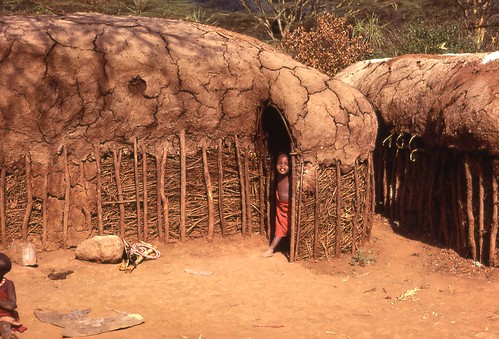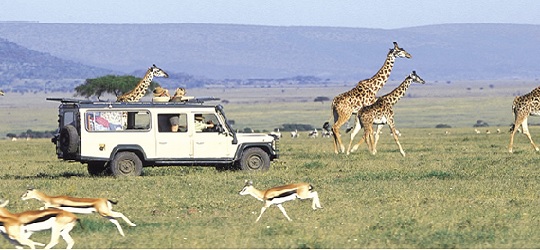The Maasai
are a tribe of people who live in parts of Tanzania and Kenya and are known as
tall and fierce warriors.
•
They
can be recognised by the special red cloth they wear which
is called a Shuka.
•
Maasai
people live a nomadic life, which means they move from
place to place with
their animals.
•
They
rely on their animals for food (including milk, meat and
animal blood) and
walk for many miles with their animals to find fresh food and water. They get
all the other foods they need by trading (swapping) with other Maasai people.
•
Maasai
men herd cattle and carry spears to protect their cattle from wild animals such
as lions.
•
The
Maasai women are responsible for cooking, collecting sticks for the fire and
building the home.
How do they live?
For the Maasai, cattle are what make the good
life, and milk and meat are the best foods. Their old ideal was to live by
their cattle alone other foods they could get by exchange but today they also
need to grow crops.
They move their herds from one place to another,
so that the grass has a chance to grow again; traditionally, this is made
possible by a communal land tenure system in which everyone in an area shares
access to water and pasture.
Nowadays Maasai have increasingly been forced to
settle, and many take jobs in towns. Maasai society is organised into male age
groups whose members together pass through initiations to become warriors, and
then elders.
They have no chiefs, although each section has a
Laibon, or spiritual leader, at
its head. Maasai worship one god who dwells in all things, but may manifest
himself as either kindly or destructive. Many Maasai today, however, belong to
various Christian churches.
Where do
the Maasai people live?
In Kenya
most Maasai people live in the Maasai Mara Reserve, which is a large park in
the South West of Kenya. It is named after the Maasai people who live there and
the Mara River, which cuts through the park.
•
The
Maasai live in shelters called manyatta, which are built from branches and
grass.
•
Maasai
homes do not have windows or chimneys so it is dark and smoky inside.
•
Animal
skins are laid on the floor and are used for warmth.
•
There
is no electricity or running water.
•
When
food and water run out the Maasai pack up their homes and walk
across the land
to a place where there is food and water for their animals.

What problems do they face?
One of the most immediate threats to the Maasai
comes from game hunters in the Loliondo region of northern Tanzania. Here,
Maasai villages have been burnt to the ground by the authorities, and thousands
have brutally evicted to provide a company, Otterlo Business Corporation Ltd
(OBC), with more access to land for game hunting.
The Loliondo Maasai are now homeless, and without
access to water and grazing land their cattle are dying.
Most of what used to be Maasai land has already
been taken over, for private farms and ranches, for government projects,
wildlife parks or private hunting concessions. Mostly they retain only the
driest and least fertile areas.
The stress this causes to their herds has often
been aggravated by attempts made by governments to ‘develop’ the Maasai. These
are based on the idea that they keep too much cattle for the land.
However, they are in fact very efficient
livestock producers and rarely have more animals than they need or the land can
carry. These ‘development’ efforts try to change their system of shared access
to land.
While this has suited outsiders and some
entrepreneurial Maasai who have been able to acquire land for themselves or
sell it off, it has often denuded the soil and brought poverty to the majority
of Maasai, who are left with too little and only the worst land.
The most immediate threat to the Maasai is
against those from Loliondo, an area in northern Tanzania. Here, Maasai
villages have been burnt to the ground, and thousands have been evicted,
allegedly to provide a safari hunting company, Otterlo Business Corporation Ltd
(OBC), with easier access to hunting land.
Why is
the Maasai Mara Reserve so important?
The Maasai
Mara Reserve is a large protected park and is important because
•
Many
famous animals including: lions, rhinos, giraffes, zebras,
warthogs and
buffaloes live there.
•
The
animals are protected by the Government of Kenya so nobody can
go and hunt
them.

•
Many
tourists from other countries visit the area to see the animals in
their
natural habitat. A habitat is a place where a plant or animal usually lives.
Tourists go on a ‘Safari’; Safari is the Swahili word for journey. This brings
lots of money to the country.
•
All
of the animals and plants in the reserve are part of a special ecosystem. An
ecosystem is an area where plants and animals live in balance with the environment.
No comments:
Post a Comment